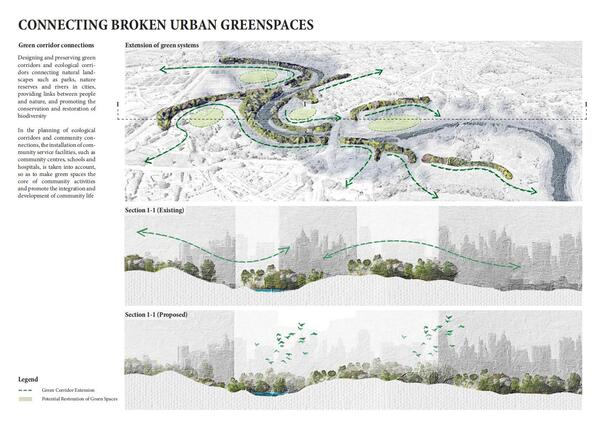Carlisle Wetlands
Project Introduction: In 2008, the United Kingdom formally enacted the Climate Change Act, becoming the first country in the world to specify by law its medium- and long-term emission reduction targets. The UN Intergovernmental Panel on Climate Change (IPCC) warned in 2019 that warming is turning the oceans into a huge potential threat to humanity. Whilst it is true that sea level rise is not a near-term threat to the UK, climate change is altering the weather and environment of the British Isles. It is therefore vital that future urban regeneration plans are fundamentally addressed to tackle the climate and biodiversity crisis and ensure that the trio of humans, animals and nature can still thrive together in the future. Examining the existing landscape texture of Carlisle and the environmental changes caused by major urban regeneration can help us to understand how the process of post-urban transformation will impact on community development as well as biodiversity. The project is a datadriven approach to new connectivity, aiming to expand and reconnect the fragmented vegetation in the River eden area with the city of Carlisle and the neighbouring communities. The design concept encompasses ‘Economic activation’ ‘Reconnection’ ‘Regeneration’ and ‘Positive earnings’. “Positive earnings”. Consider new connections for people, animals and plants that complement each other. Finding a better urban regeneration plan for Carlisle, with increased biodiversity as the primary ecological goal, and resilient connections between communities as the infrastructural goal


